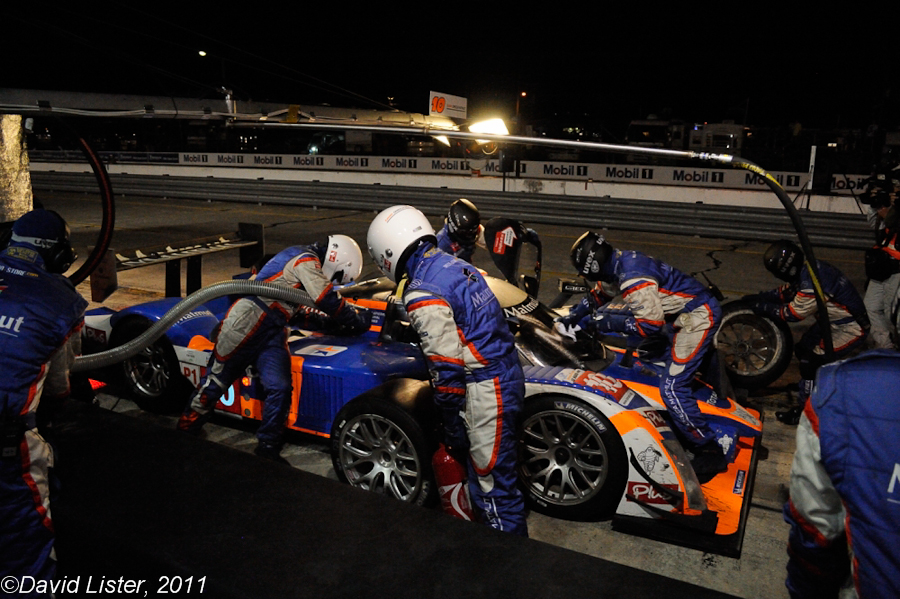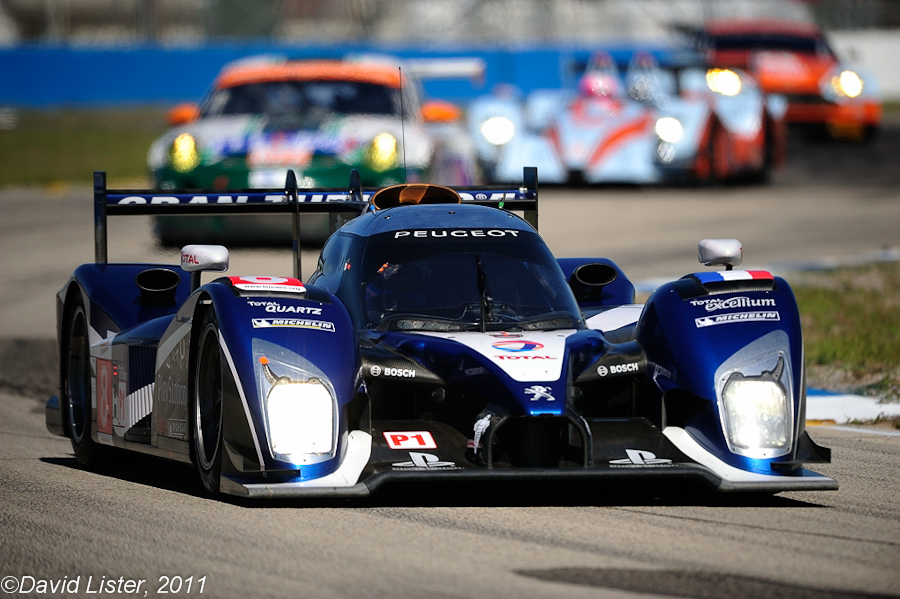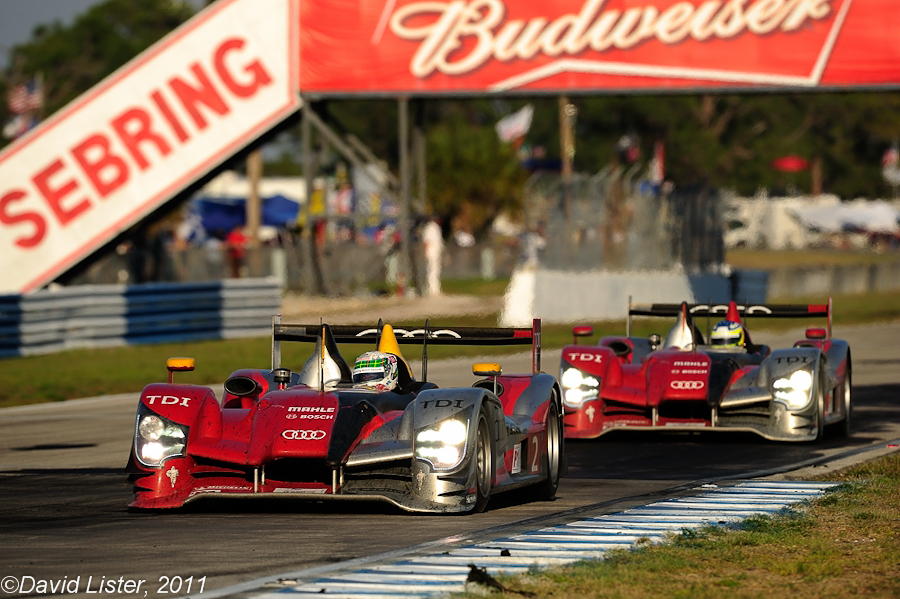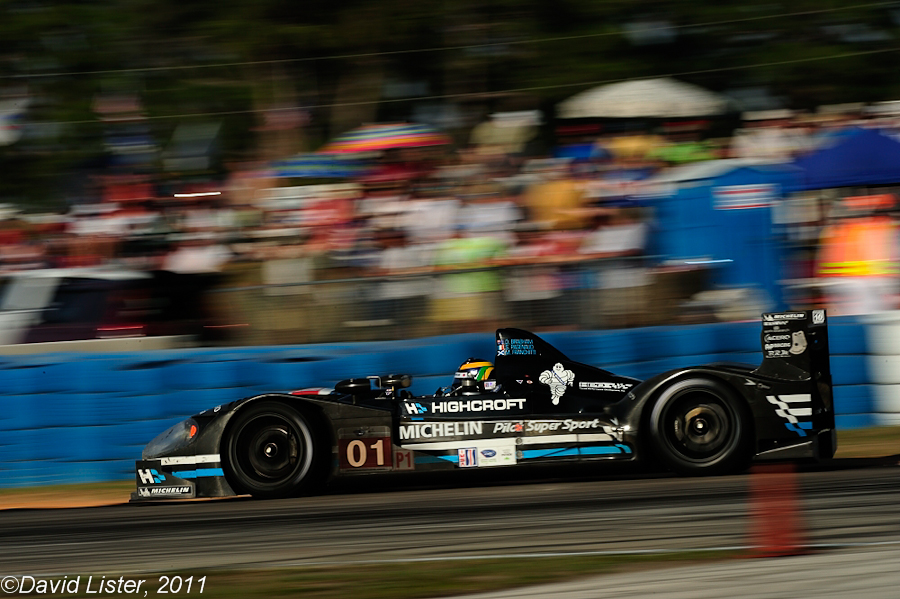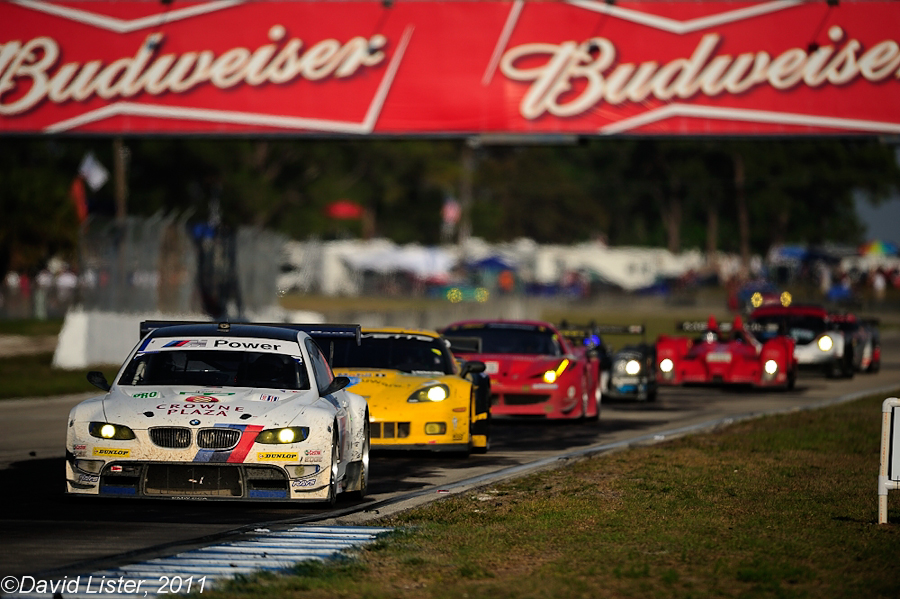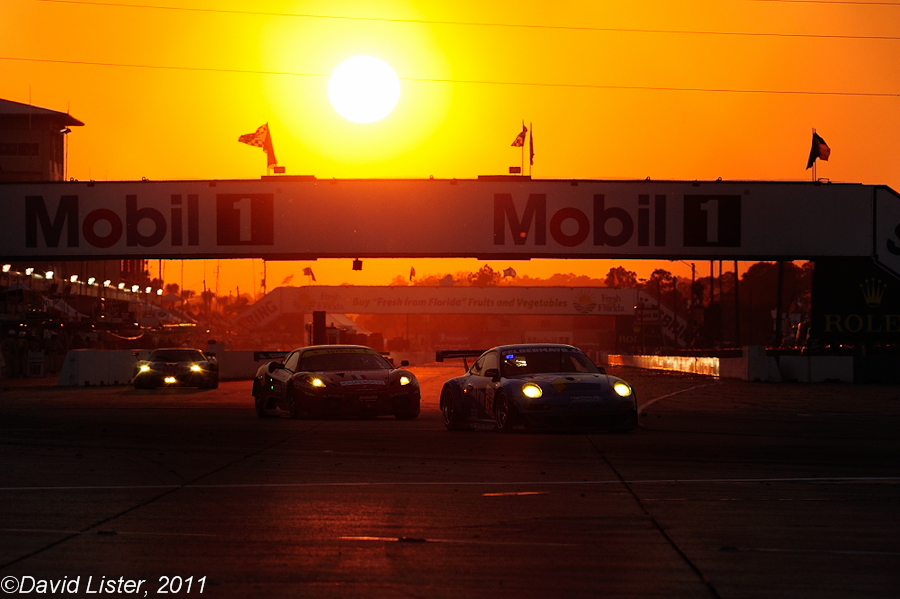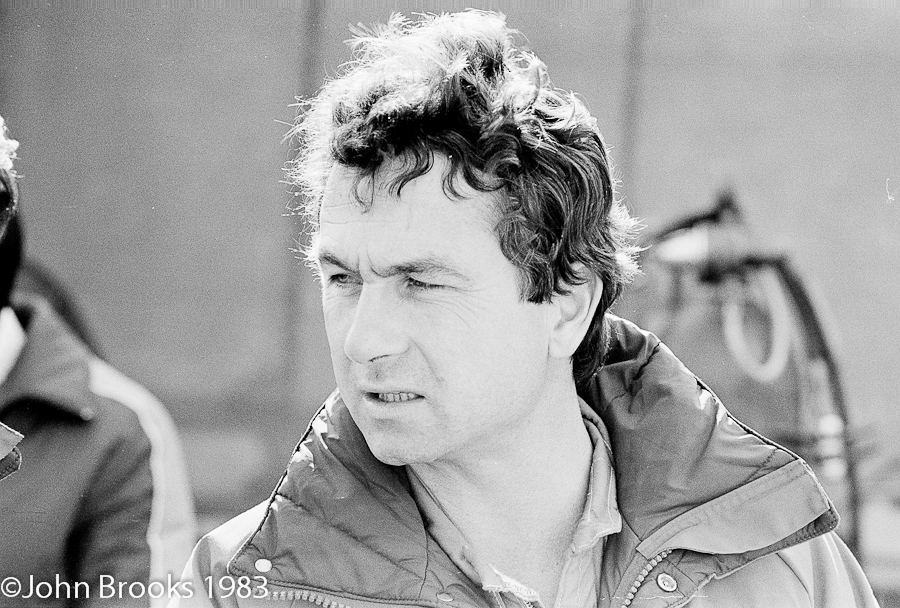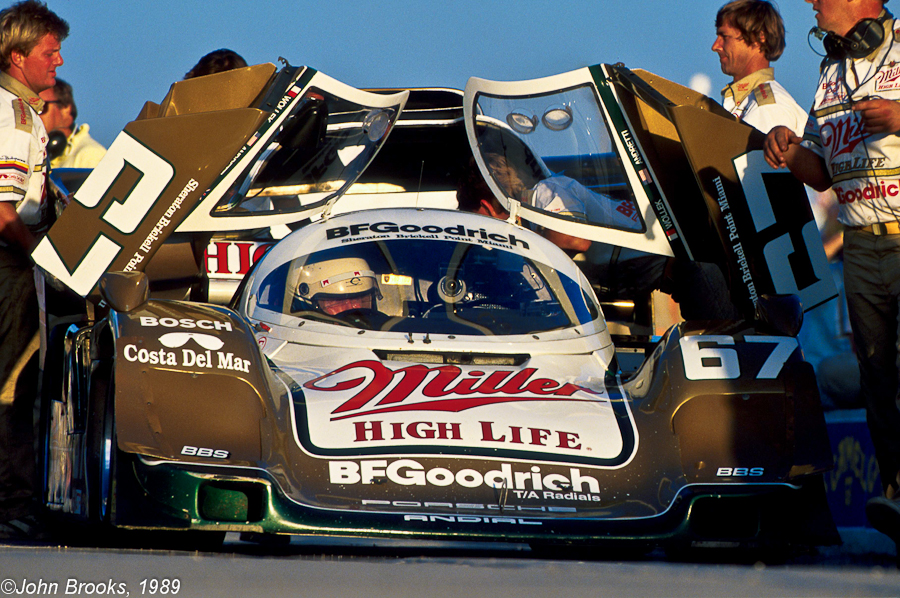As we get older we tend to ponder the past more. And, if we’re ancient, we tend to do so while at the same time decrying the present. It is a ritual that has been passed down through time, generation after generation. And, one suspects, it will remain a tradition long after we have gone to our final reward. Yet, when it comes to present day motorsport, I can’t help but believe that perhaps, just perhaps, there is at least some justification for wanting to look and head “backwards.”
Real life has increasingly become ever more complicated, so why should we put up with a similar increase in complication when it comes to our pastimes, such as motorsport? The other weekend I made a serious attempt to watch the opening 2011 Formula One race, a series controlled by regulations so complex that I’m not sure if the participants themselves understood them.
In previous years I have jokingly said that to view an F-! event you needed to have your lawyer by your side to explain what was happening. Now it seems clear you ought to add a race engineer. For me, it’s all bit too much, so I’ll probably give up on Bernie’s show and grab a refreshing nap instead.
Still, this blog is for those of us who care about cars with fenders and more than one seat. And, although the rules for sports cars may not be as incomprehensible as those of Formula One, trying to sort out the differences between the ever growing numbers of sports car racing categories is straining on my limited number of tired old brain cells. Indeed, it is as if those creating this burgeoning population of befendered divisions have adopted the same “more is better” syndrome that tax men around the globe use when writing their codes.
At Sebring there were no less than six different categories on the starting grid: three for the prototypes and three for the production set. And, unless one had a guide, the only distinction the average person could make between them was the pumpkin seed shapes of the sports racers as opposed to the road going outlines of their lesser performing assembly line based counterparts. Trying to sort out one class from another within those broad parameters was much akin to trying to successfully complete a Sunday newspaper crossword puzzle, an impossible task for all but the few geniuses among us.
The regulators may be happy with what they’ve wrought, as most likely the manufacturers and the participants are, because in today’s scriptures there’s something to keep everyone happy – everyone that is except the fans. Sport, even motorsport, is about winning, and to have winners, obviously you have to have losers. That is how games are supposed to be played.
In many ways, while F-1 has made getting to that end overly complicated, those in charge of the sportscar universe appear to have not attempted to dilute the object of the exercise itself. In that same vain, and for all of its faults, of which there are many, the NASCAR owned Grand Am Rolex championship has not catered to the idea of making every member of the masses a winner. The Rolex has only two classes: the prototypes and the GT cars, and therefore just two chances for victory. All the rest must deal with disappointment.
There is a chance in the current climate for sportscar racing to climb out of the gutter it has so long resided in. Doing so, however, will require a re-think about how many winners can fit on the head of a very small pin. For the sports car community the, at least in terms of a salable class structure, less is far better than more.
Bill Oursler, April 2011
Category Archives: From A Continental Correspondent
The Death of a Friend
Bill Oursler considers the final edition of National Speed Sport News.
As I’ve grown older, my routines have become more set. On Mondays, for example, I typically get up early, grab a cup of coffee and begin to write a race report for National Speed Sport News, as I did right after Sebring. It is now a week later, and that report will be my last for NSSN. It is not that I am departing from the publication with which I have been associated since 1975, but rather that NSSN itself has departed.
The issue featuring my Sebring report was the final one in a history that stretches back to 1934. The reasons for the demise of this famous racing newspaper are at once both complicated and simple. The most important and fundamental one of course is the internet, the immediacy of which no print medium can match.
When I began reporting for NSSN, it not only covered events, but the business of motorsport as well. Back then a several day old story was still new and unknown until it arrived on a subscriber’s doorstep. Today, it’s “old hat” after just a few hours. In terms of delivery, the printed newspaper is an old fashioned train trying to compete again a high speed airplane. In short it is a race it can’t win, and because it can’t, advertisers increasingly have put their money elsewhere. The result is that the lifeblood of the print media industry has been sucked out of its veins, leaving it to die.
That is the simple part. The more complicated is the fact that that motorsport’s fan base is getting older. The younger generations have different interests, their love of the automobile dimmed to some degree by the perception that it is bad for the environment in its present form. Indeed, in the new world of the immediate, perception more often than not overcomes reality because reality often requires more than a few minutes to understand.
I will miss National Speed Sport News. I will miss working for it. Moreover, I will feel sorry for Chris Economaki and his family who which built it into the powerhouse it was in the sport. Most all of though, I will bemoan the fact that its loss represents an era in which simplicity has triumphed over the search for understanding the complex universe in which we live.
Bill Oursler, March 2011
Bump and Grind
Bill Oursler has sat down to consider the events that unfolded in the Central Highlands of Florida last week, here are some of his observations. John Brooks, March 2011.
So what did we learn from this year’s annual Sebring 12-Hour? The answer is not much that we already didn’t know. At Sebring both the slower 2011 prototypes and their 2010 spec predecessors, now hobbled by the rules so they don’t outshine the lesser performing 2011 models were present. And, in looking at the results, if the outcome of the venerable Central Florida affair suggested anything, it was that perhaps, at least at this stage, it might have been better if newer cars had been left home.
And, for those who might need further convincing that the new generation prototypes are ready. there is the fact that the fourth home 2010 bred Audi turbo diesel R15+ had spent more than a little time in the paddock. It was being repaired from its tangle with the second Factory 908 (which eventually struggled across the line in eighth) and lapped as quickly as 2011-spec 908 in front of it, once it returned to the track.
Now, if all of this doesn’t send the ACO boys reaching for the headache powder, perhaps the second place performance of the gasoline powered Highcroft Racing ARX-01e will.
Delivered to Highcroft less than a week before the start, with its paint figuratively still soft to the touch, it ran like a freight train, fighting for the lead for much of the way. Maybe, the ACO will solve the Highcroft Acura issue by simply not inviting it to come over this June; although, given the current Japanese disaster, that might seem like hitting someone when they’re flat on their back. (One never needs bad press, you know.)
I’ve said this before, and I’ll say it again: motorsport in general, and the people in charge of Le Mans in particular, never seem to understand when they have a good thing going. In the last several years the current formula has worked out well, if not perfectly (keep in mind that the gasoline contingent could have used a little more help towards getting an even playing field with the diesels). More importantly, the ACO might likewise want to recognize that manufacturer participation is at best problematical, less centered around winning, than the strength of car sales and the amount of black ink those sales generate.
Differing, and constantly changing agendas over the years, have done little to make sportscar racing’s future a secure one. Stability, on the other hand, has. In a time of economic problems, forcing the sports car racing community to continually spend money appears to this writer to be somewhat stupid. In my view, the ACO ought to keep its fingers off the keys of its word processors and let stability, and the close racing it tends to create, reign and leave the advanced technology avenue to Formula One which now requires the presence of lawyers and engineers to explain the rules to its fan base.
Bill Oursler, March 2011
I Read The News Today Oh Boy
Actually that will be something that won’t be said again, at least when referring to US publication, National Speed Sport News.
Chris Economaki sold copies of the first issue back in 1934 and has been involved ever since as a contributor, then Editor. He became known as “The Dean of American Motorsports” and has several media centres named after him, most notably that at Indianapolis Motor Speedway. His work with NSSN has had a profound influence on North American Motorsport, as attested by the number of awards he has received over the years.
Economaki’s daughter, Corinne, is the magazine’s current Publisher, but this week came the announcement that the print edition of the magazine would cease after the 23rd March 2011 issue. For many people in the business this represents the end of an era. 77 years is not a bad innings, but for Chris, a familiar figure at all the big races until recently, this must be like a death in the family.
RIP National Speed Sport News, 1934-2011
John Brooks, March 2011
Bob……………
Another day, Another Dollar.
I am very pleased to welcome prolific author and columnist, Bill Oursler, to the DoubleDeClutch crew.
Bill kicks off his contribution to this blog with a look back at the man known as “Brilliant Bob”. Today marks the French Champion’s tenth anniversary.
Stay in this business long enough and you will, more often than you might want, find yourself remembering the good guys who are no longer with us. In the case of Frenchman Bob Wollek those memories are particularly bitter sweet since he was killed not on a race track, or even in a car, but rather on a bicycle riding down a local road in Sebring, the victim of an improperly driven motor home.
This week is the tenth anniversary of that senseless and ironic tragedy. Therefore, on it I think it is more than appropriate not just to take note of his passing, but to celebrate the man.
And celebrating Bob Wollek is not difficult to do. Although he never won his country’s greatest sportscar race, the 24 Hours of Le Mans, and while he wasn’t a regular for the Porsche factory for most of his time in motorsport, Wollek’s record was, to say the least, spectacular. Indeed, one could argue strongly that he was perhaps the greatest ever French sports car driver, a truly high accolade given the number of superb two seat racers that country has produced throughout the years.
Wollek was a highly competitive individual; a trait he showed in the mid1960’s when he was a winning member of his college ski team. In fact, Wollek was in training for a spot on the French Olympic squad in 1968 when he suffered an injury that forced him to quit the sport. Still, even by then he had already dabbled in motorsport, running a few rallies in a 911 the year before. However, with a career in skiing now denied him, he then took up racing on a serious basis, running primarily in the French national open wheel arena before switching to the sportscar world.
Once there, he spent the next three decades compiling a phenomenal record, that included his 1982 crown winning performance in the hotly contested German National Championship, as well as his four Daytona 24 Hour victories, and his Sebring triumph in 1985. Interestingly, in the mid-1980’s one of his regular partners was A.J. Foyt, a man Wollek was introduced to at Daytona in 1983 when the American was abruptly added to the Swap Shop 935 team, of which Wollek was a member, during the race.
The Frenchman expressed his far less than enthusiastic attitude about Foyt’s presence to a television reporter in a pit interview on Sunday morning, using expletives that had to be deleted before it aired. In spite of that outburst, Wollek grew to respect Foyt, especially after the four-time Indy 500 winner helped in bringing the Swap Shop 935 to Daytona’s Victory Lane in what was Wollek’s first 24 hour triumph there.
Although determined on the track, Wollek could be introspective, once nearly coming to tears in the press-room at Le Mans in 1997 when explaining he caused the retirement of his factory 911 GT1 by losing control and and wrecking the transaxle on one of the high curbs surrounding the Sarthe circuit. In reality, though, it turned out that there was nothing Wollek could have done, the cause being a half shaft which failed on its own.
With the factory’s withdrawal from the sport at the end of 1998, Wollek again found work, driving for privateer Porsche teams, and was scheduled to race at Sebring in the highly competitive Petersen-White Lightning 911 GT3 on the weekend of this death. Today ten years later, Wollek is remembered as a hard nosed competitor and a good man. Surely that speaks all that needs to be said about him for those of us who still miss him.
Bill Oursler, March 2011

